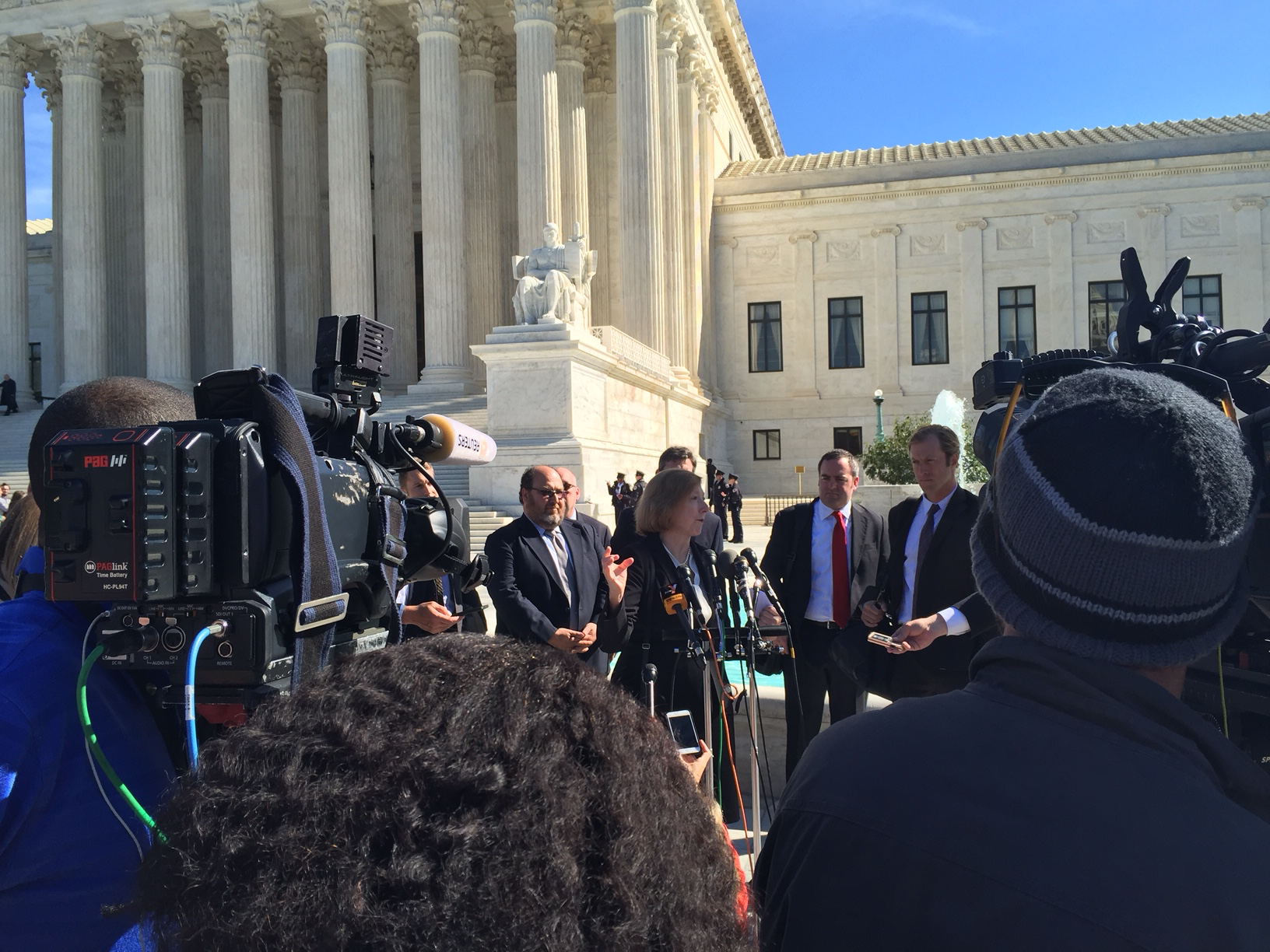(Cross-posted at Huffington Post)
A funny thing happened on the way to the Supreme Court in yesterday’s Samsung v. Apple design patentAs distinct from a utility patent. A design patent protects only the ornamental design or appearance of an article of manufacture, but not its structural or functional features. An ‘article of manufacture’ is a broad term which may extend even to computer icons. Like utility patents, design patents must be nonobvious but this standard is harder to apply to designs. dispute. The high court was expected to review the lower court’s award of the entire profits made for 11 different smartphone models — just under $400 million.
Coming into the argument, it looked like the big issue would be whether an “article of manufacture” had to be the entire product sold (in this case, the entire phone) or could be a component of the product. Here’s the question presented from Samsung’s opening brief:
Where a patented design is applied only to a component of a product, should an award of infringer’s profits be limited to profits attributable to that component?
Unexpectedly, some time before the argument Apple had agreed to concede that the “article of manufacture” didn’t have to be the entire product sold. That is, Apple agreed with Samsung and the government that the answer to the question that the Court had agreed to decide is “Yes.”
So what’s left?
The Court still has to decide how the lower courts should handle the situation.
There are two questions to answer: 1) how do you determine the correct article of manufacture? 2) once you have the article of manufacture, how do you determine lost profits?
Samsung’s answers were fairly simple. You determine the article of manufacture by looking at the patent and comparing it to the accused device; you identify the smallest component that includes the patented design. For damages, you have a couple of possibilities: 1) you determine lost profits by using the cost of the component as a percentage of the total cost of the product and multiply by the total profits; 2) you allow the patent owner to provide evidence that the particular component is a big driver of profit and therefore is a bigger contributor to total profits.
I think that Apple was in a difficult position. They were arguing for a rule that might work in this case, where they’re the patent owner, but that same rule could be disastrous if they were defendants against a design patentAs distinct from a utility patent. A design patent protects only the ornamental design or appearance of an article of manufacture, but not its structural or functional features. An ‘article of manufacture’ is a broad term which may extend even to computer icons. Like utility patents, design patents must be nonobvious but this standard is harder to apply to designs. infringement suit. It’s also difficult to argue that the term “article of manufacture” means the same thing everywhere it appears in the statute, except in the damages section, where it means something different.
At the same time, Apple doesn’t want to give up its $400 million damages award. Once they’ve conceded that the “article of manufacture” doesn’t have to be the whole phone, they don’t have a lot of ways to preserve that award. One way was to try and argue that Samsung waived its chance to argue that the “article of manufacture” was something smaller, although the Court didn’t seem particularly sympathetic to that. Another is to persuade the Court to adopt a way of determining the “article of manufacture” so that it still ends up being the entire phone. I think that’s why they endorsed the government’s test.
The government proposed a 4 part test that includes some external factors about the relative importance of the design features, which would let Apple argue that the appearance of their phones is so critical to sales that the article of manufacture should just be the entire phone. If successful, Apple would get to keep its $400 million.
The Court definitely seemed skeptical that the $400 million damages award was right, and everyone agrees that the Federal Circuit’s interpretation of the statute was wrong. So I think it’s likely that Apple won’t come out of this with all of the money.
I expect that the Court will go for simple over complicated. It might even do little more than correct the Federal CircuitSee CAFC, vacate, and remand back to the district court.
Now, the waiting begins!

